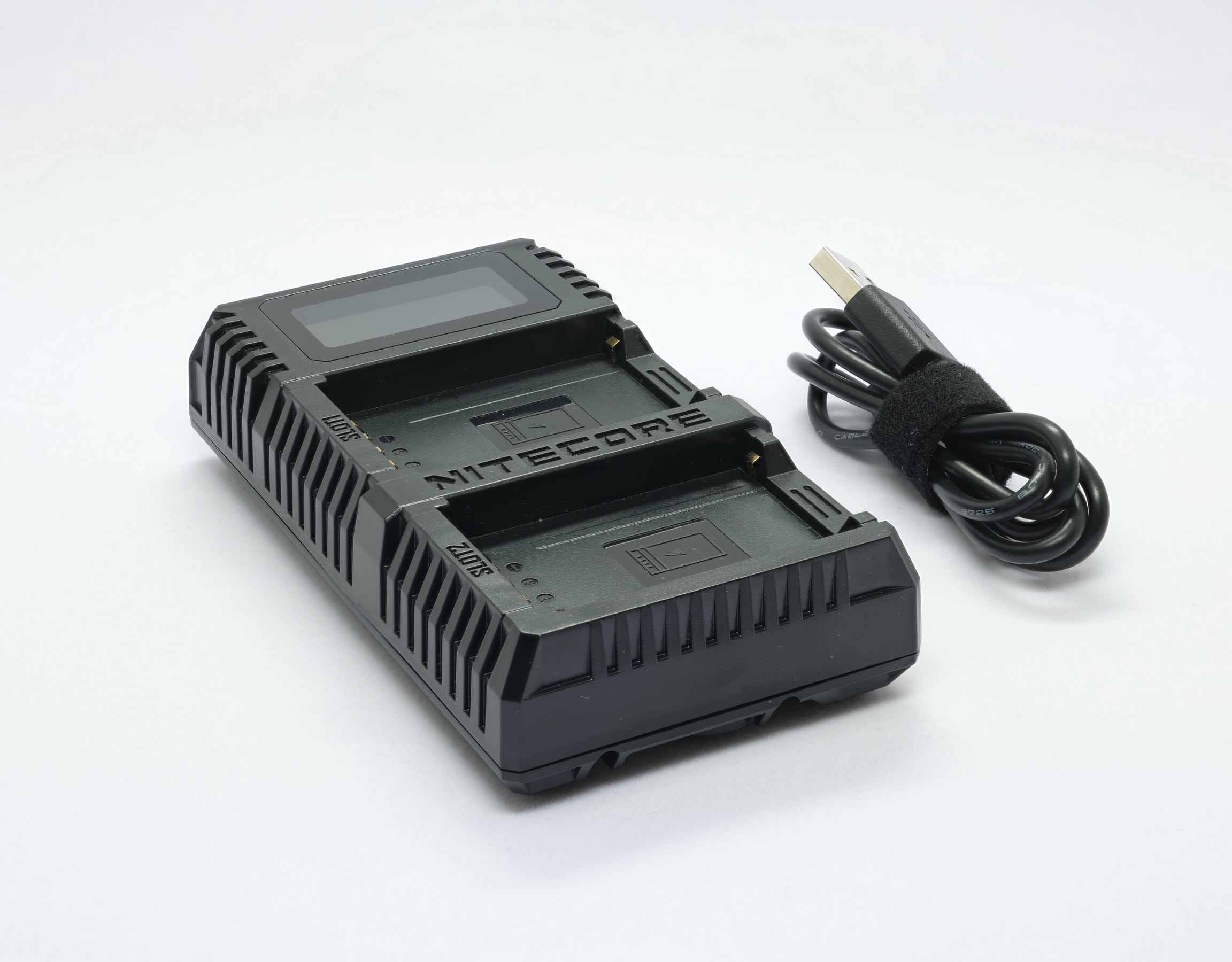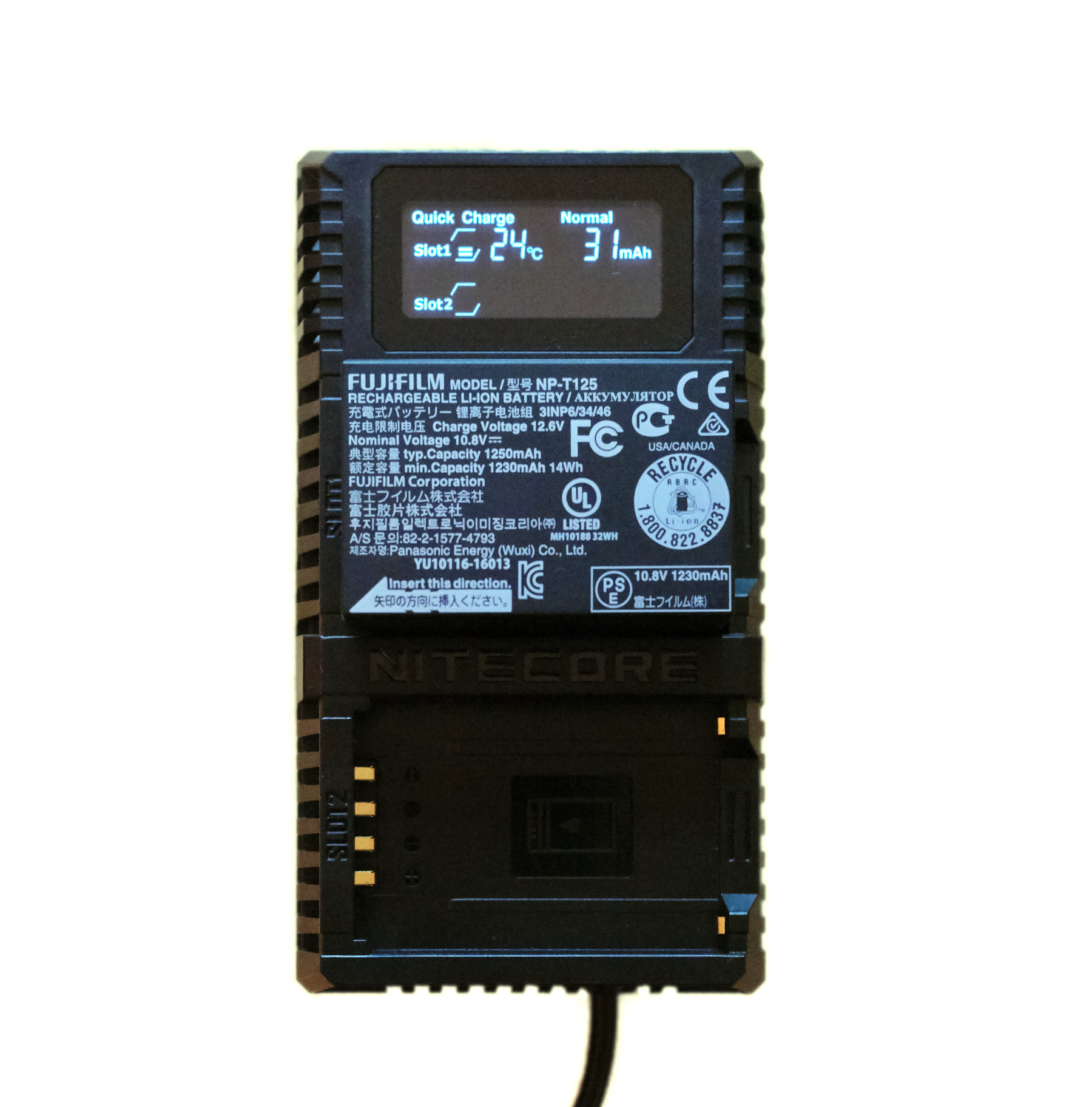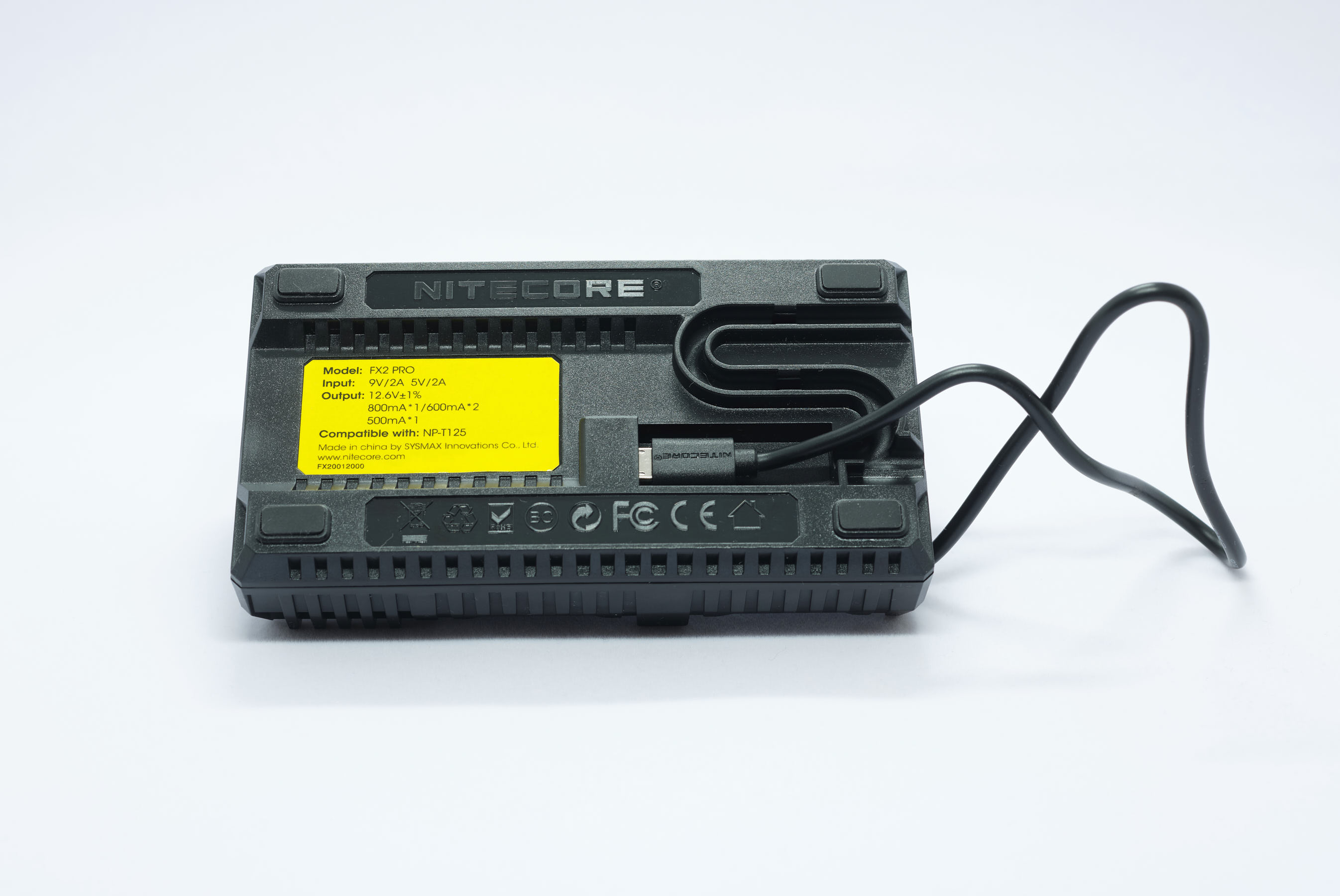Updated: February 25, 2020
One of the first things I do when I buy a new camera is to buy a second battery. Fortunately, in Hong Kong, the Fujifilm GFX 50R introductory special included a free second battery. I’ve found that the 50R battery is very good and easily lasts a day of regular shooting. However, when doing a series of long exposure or bracketed shooting, there’s always the chance of running the battery down.
The second thing I do when I buy a new camera is to start hunting for a dual battery charger. The factory Fujifilm BC-T125 charger is a peculiar device. It’s size is not too bad, but it has an odd universal plug arrangement, which makes the device larger than it needs to be. I much preferred the figure-8 plug of Fujifilm cameras of the past (X-Pro2, and X-T2). With the old chargers, if you had an Apple charger on hand, you’d be able to power the chargers with the small figure-8 plug that all Apple chargers come with.

My initial search for a dual battery charger for the GFX series turned up zero results. While keeping an eye out for a dual battery charger for the Leica M10, I came across a company called Nitecore. Some quick research determined that this was a good company with positive feedback online and a history of producing quality products.
Nitecore to the rescue
Intrigued, I reached out to their Hong Kong distributor, Nitecore Photo HK and asked if they had anything on deck for the GFX series. It turned out that they were just about to release the Nitecore FX2 Pro for the T-125 battery in the GFX cameras. I told the folks there that I’d like to buy one when it comes in. A few weeks later, they notified me that the charger had been released and are in stock.

I purchased one at full retail, along with a dual charger for the M10. Upon receiving the charger, I was a bit surprised at how big and sturdy it was. It’s definitely built to last and appears to be ready to withstand some tough use and abuse. The charger comes with a USB cable and instructions. The instructions are important because it provides information on what will trigger the Quick Charge mode.
Quick Charge mode
For the GFX, the factory charger provides a maximum of 800mA of current at 12.6V. The Nitecore charger matches that output when used with an appropriate power source that enables the Quick Charge mode; you need to have a power source that can supply 9V and 2A. The Quick Charge mode activated when I used it with a 45W Xiaomi and a 65W ThinkPlus power supply.
When engaged in Quick Charge mode, the Nitecore charger was able to charge the T-125 battery from 0% to 100% in 2 hours and 2 minutes; this is on par with the Fujifilm charger. When not in Quick Charge mode, the charger provides 500mA of current, which will result in a longer charging time.

When two batteries are inserted into the charger, something interesting happens. When using Quick Charge mode, the charger can charge both batteries at the same time, with 600mA of current available for each battery.
However, when Quick Charge mode is not engaged, the charger can only supply one battery with current at a time, with 500mA available for that one battery. The Nitecore appears to be rather intelligent in that it checks the battery charge level of both batteries, and then charges the battery with the higher existing charge level first; that way, you’ll have a full battery faster. Clever stuff!
Build quality and safety
The Nitecore engineers appear to care about safety, since they use a four prong charging setup, which allows for temperature monitoring and short circuit protection. The documentation claims that the charger will prevent short circuits from the wrong battery being inserted or battery faults. I did not test this so we’ll have to take Nitecore’s word for it!
The robust build quality of the Nitecore does have a small penalty in that it isn’t as svelte as it could be. Another odd choice from the engineers is the placement of the USB cable plug. It’s down a small channel that enables cable management. While this is great if you leave the cable plugged in all the time, it’s a pretty bad location for people like myself that use the charger during travels and are constantly inserting and removing the cable.

I should mention a really nice touch from the engineers; they’ve included rubber feet under the charger. I’ve had chargers go flying off hotel desks due to the cables being heavier than the charger. The rubber feet on the Nitecore holds the charger nicely in place. I wish all chargers provided rubber feet like this.
Conclusion
Overall, I’m very happy with the Nitecore FX2 Pro and find it very convenient to charge the batteries using a number of power sources, including a MacBook Pro, battery packs and various USB power sources available in planes, airports, and coffee shops. My only wish is for Nitecore to consider changing the location of the USB plug in a future version to make it more accessible.

Pros
- Super flexible in accepting any USB power input
- Quick Charge mode which matches the Fujifilm charger’s speed
- Superb build quality, with rubber feet that demonstrates attention to detail
- Visual monitoring of charge current, charge volume (the amount of charge that has been added), temperature, and voltage
- The only reputable dual battery charger on the market
Cons
- Odd choice for the USB plug location, which makes inserting and removing the cable a pain every time
- Very robust build means that it’s bigger than it could be
I hope the above has been helpful in your search for a dual battery charger. I’ve now fully replaced the Fujifilm with the Nitecore as my primary charger for both daily use and for travel. If you buy the Nitecore, please leave a comment below and let me know what you think. I had never heard of this company before, but I’m very happy with the two chargers I’ve bought thus far.

Update – February 25, 2020:
A highly respected member of DPReview’s Medium Format Forum, Chris Dodkin posted a cautionary tale about his experience with the Nitecore charger. Since Chris is the forum moderator and a very experienced photographer, I thought it would be wise to pass on his comments to my readers.
Chris makes a very important point which I wish Nitecore would improve upon. I continue to use the Nitecore chargers and don’t have any issues with them, however I also had some frustrations similar to what Chris describes and reached out to Nitecore for help.
As Chris noted, the Nitecore chargers are picky about the power supply. The charger must be fed with at least 9V 2A (18W) or 5V 2A (10W) for the charger to work correctly. If supplied with less, the charger does not gracefully notify the user; instead, it does strange things like blink the screen or show that it’s charging when it is in fact not.
After using both the Nitecore GFX dual charger and the Leica M10 dual charger for more than a year, I’ve found that any charger which supports Power Delivery (PD) will work great with the Nitecore chargers. My personal favourite charger at the moment is the RavPower 61W GAN Charger reviewed here.
Discover more from fcracer - Travel & Photography
Subscribe to get the latest posts sent to your email.